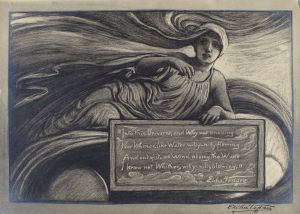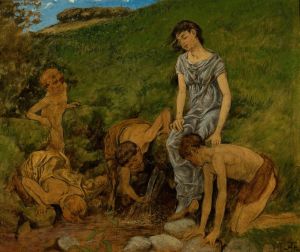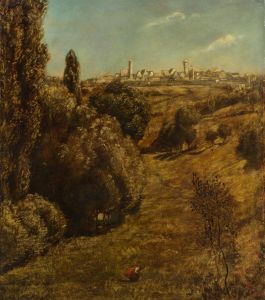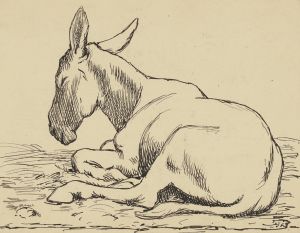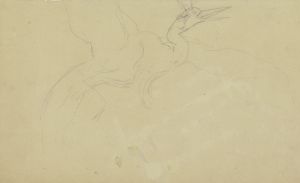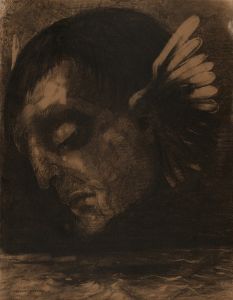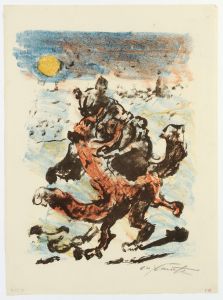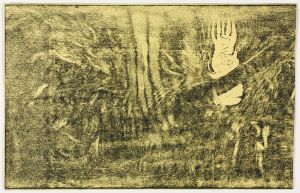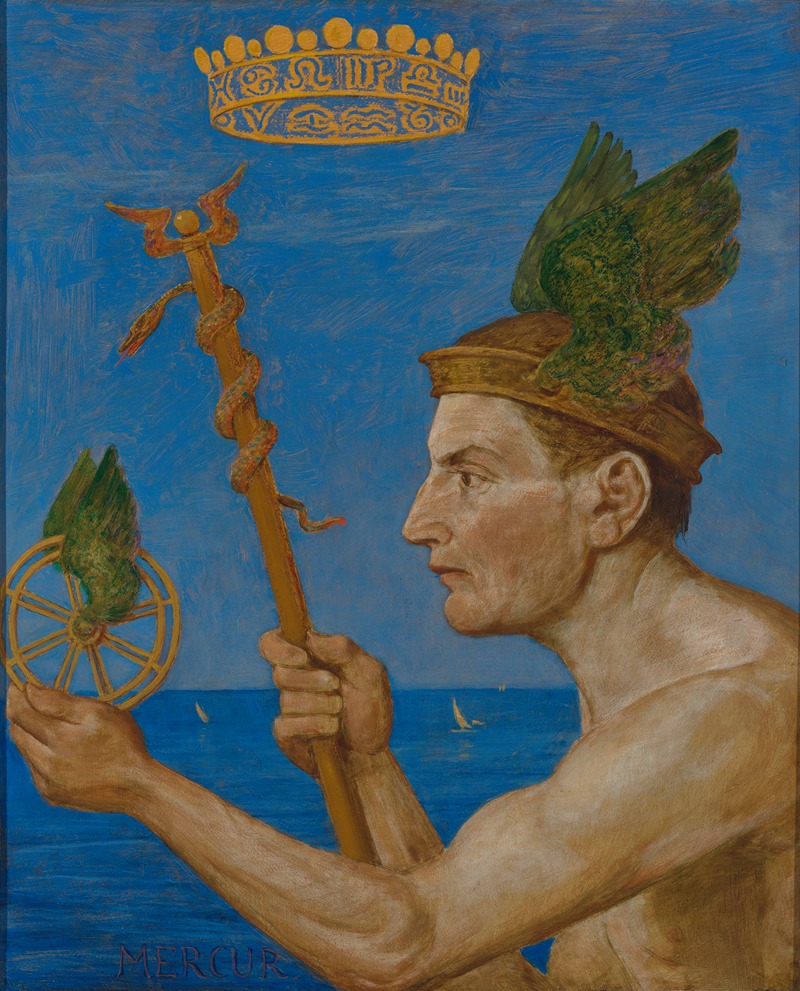
Merkur
A hand-painted replica of Hans Thoma’s masterpiece Merkur, meticulously crafted by professional artists to capture the true essence of the original. Each piece is created with museum-quality canvas and rare mineral pigments, carefully painted by experienced artists with delicate brushstrokes and rich, layered colors to perfectly recreate the texture of the original artwork. Unlike machine-printed reproductions, this hand-painted version brings the painting to life, infused with the artist’s emotions and skill in every stroke. Whether for personal collection or home decoration, it instantly elevates the artistic atmosphere of any space.
Hans Thoma's painting Merkur is a notable work by the German artist, created in 1878. Hans Thoma (1839–1924) was a prominent figure in 19th-century German art, known for his landscapes, portraits, and mythological themes. Born in the Black Forest region, Thoma's work often reflects a blend of Romanticism and Realism, with a particular emphasis on nature and allegorical subjects.
Merkur depicts the Roman god Mercury (known as Merkur in German), who is associated with commerce, communication, and travel in Roman mythology. In this painting, Thoma portrays Mercury in a serene and contemplative manner, diverging from the more dynamic and action-oriented depictions of the god commonly seen in classical art. The figure of Mercury is rendered with a sense of calm and balance, emphasizing Thoma's interest in humanizing mythological subjects and integrating them into natural settings.
The painting is characterized by Thoma's meticulous attention to detail and his use of soft, naturalistic colors. The background features a harmonious landscape, which is a recurring element in Thoma's work. His landscapes often reflect his deep connection to the Black Forest and his admiration for the natural world. In Merkur, the integration of the mythological figure into a tranquil environment underscores Thoma's ability to merge classical themes with his personal artistic vision.
Hans Thoma's work, including Merkur, gained recognition during his lifetime, particularly in Germany. He was celebrated for his ability to reinterpret traditional themes in a way that resonated with contemporary audiences. Thoma's art was influenced by the German Romantic tradition as well as by his exposure to the works of the Old Masters during his travels in Italy and France.
Today, Merkur is housed in the Staatliche Kunsthalle Karlsruhe, a museum in Karlsruhe, Germany, which holds a significant collection of Thoma's works. The painting is considered an example of Thoma's unique approach to mythological subjects and his skill in blending narrative and natural elements.
This artwork continues to be appreciated for its aesthetic qualities and its place within the broader context of 19th-century German art. Hans Thoma remains an important figure in the history of art, and Merkur is a testament to his ability to create works that are both timeless and deeply rooted in his cultural and artistic heritage.





